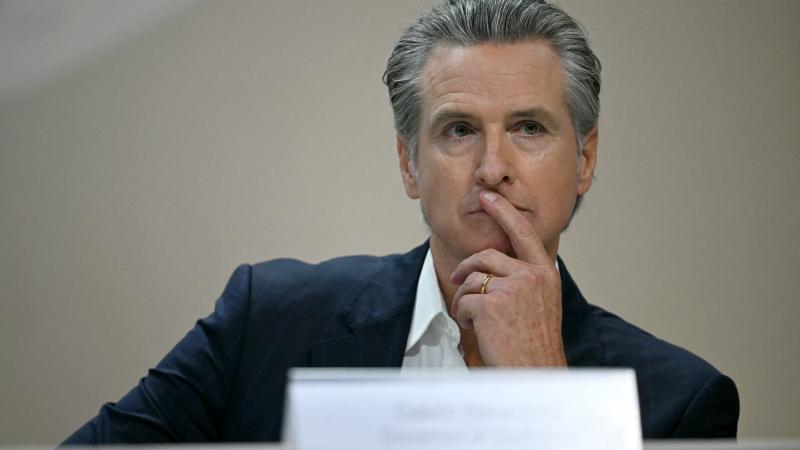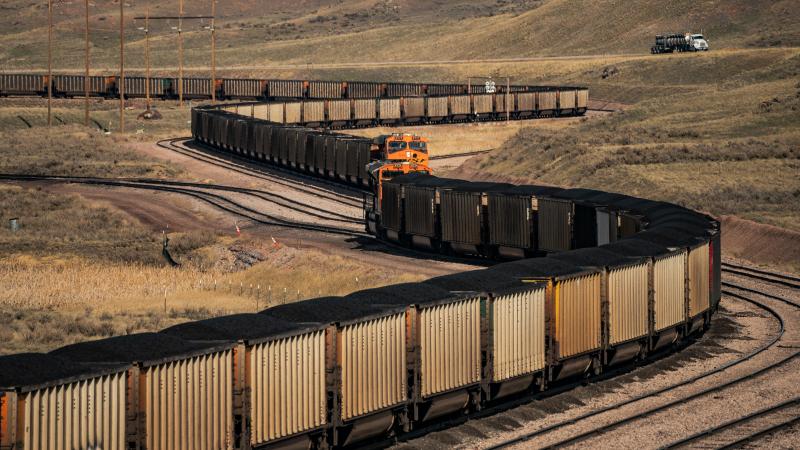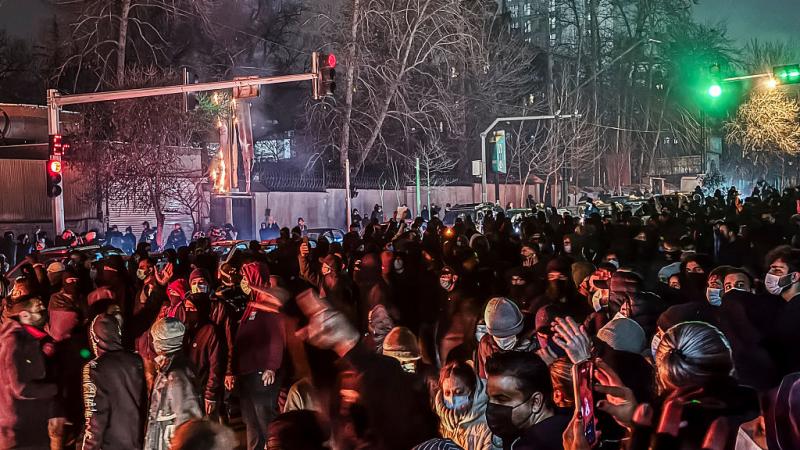America at higher blackout risk as EPA aims to shut down more power plants, despite grid assessment
Less than a month after the EPA announced rules that will likely shut down coal plants and prevent more gas plants from being built, a new reliability assessment shows heightened risk of blackouts this summer across large portions of the U.S.
As summer rolls in with warmer temperatures, large portions of the U.S. are at a higher risk of blackouts, a new report warns.
The North American Electric Reliability Corporation (NERC), a nonprofit grid watchdog, released its latest summer reliability assessment Wednesday, and it shows what past seasonal and long-term assessments have shown — America’s grid operates on the thin margins of reliability. Anytime inclement weather hits — heat waves or cold snaps — increased demand on the grid puts large parts of the U.S. at risk of blackouts.
From the Midwest, New England, to California and Louisiana, according to the assessment, the risk of blackouts during heat waves this summer is rising. The risk of emergency conditions in Texas, according to the assessment, will hit 18% this summer, and the risk of rolling blackouts is 14.6%.
There are a number of factors, according to NERC, contributing to the lack of adequate electricity supply under periods of high demand. This includes the retirement of coal-fired generators, which removes on-demand electricity resources from the grid. A lot of capacity has been replaced by reliable natural gas-fired power plants, but during cold weather, natural gas gets diverted to heat for homes, which leaves less for generating commercial electricity. Lastly, increased reliance on intermittent wind and solar, which depending on weather conditions, may not be available when demand is high.
The problem is likely to get a lot worse. Last month, the Environmental Protection Agency released rules requiring coal plants to retrofit for carbon capture and storage (CCS) or retire. Since the upgrades are very expensive, most will retire. New natural gas plants will also have to add CCS under the rules, which will discourage investment in the expensive projects. While existing gas plants are exempt, they may be targeted later.
Energy analysts Isaac Orr and Mitch Rollin, who publish their analyses on their “Energy Bad Boys” Substack, explain in “EPA’s Green Leap Forward” that the agency doesn't conduct operational reliability studies as part of its rulemaking. Instead, it relies on what’s called resource adequacy, which the EPA has stated isn’t sufficient analysis to ensure enough electricity during peak demand periods.
In determining resource adequacy, the agency looks at generators’ capacity factors, which are the number of gigawatts or megawatts that various sources are expected to provide under normal operating conditions. However, as the EPA shuts down on-demand power sources, then much of that capacity is made up of wind and solar power, which may or may not be available at any given time, such as during a heat wave or cold snap.
Unlawful, unrealistic and unachievable
The rule has electrical cooperatives and utilities sounding alarm bells. Not only are the rules expected to undermine the grid’s ability to meet current demand, the demand for electricity is expected to rise as a result of data centers, manufacturing facilities, electric vehicles, and electrification of home appliances.
The National Rural Electric Cooperative Association, which represents nearly 900 nonprofit rural electric cooperatives and public power districts, called the rules “unlawful, unrealistic and unachievable.”
Duke Energy, which serves 8.4 million customers in the Carolinas,Tennessee, Florida, Indiana, Kentucky and Ohio, told Fox News that the rules will limit the utility’s ability to serve future demand as new manufacturing and data facilities are built in the areas.
"The final rule presents significant challenges to customer reliability and affordability, as well as limits the potential of our ability to be a global leader in chips, artificial intelligence and advanced manufacturing," Kaitlin Krishner, Duke Energy spokesperson, told Fox.
PJM, which serves 14 states in the east-central U.S., also warned of increasing problems as loads on the grid rise.
“The EPA has not sufficiently reconciled its compliance dates with the need for generation to meet dramatically increasing load demands on the system,” the utility said in a statement.
Admitted impact
Despite the protestations of those who place "climate change" above all other considerations, even the Department of Homeland Security (DHS) has admitted the dangerous and disruptive effect a grid failure may have.
"Extended power outages may impact the whole community and the economy. A power outage is when the electrical power goes out unexpectedly." According to DHS, "a power outage may disrupt communications, water and transportation; close retail businesses, grocery stores, gas stations, ATMs, banks and other services; cause food spoilage and water contamination and prevent use of medical devices."
Stuck
Critics of the EPA’s rules also argue that they assume a much greater potential for CCS deployment than actually exists.
“CCS is not yet ready for full-scale, economy-wide deployment, nor is there sufficient time to permit, finance, and build the CCS infrastructure needed for compliance by 2032,” Dan Brouillette, CEO of Edison Electric Institute, which represents investor-owned utilities, said in a statement.
Over the last 15 years, attempts to make CCS work with coal-fired power plants have failed repeatedly.
The potential of CCS on natural gas-fired power plants also has its skeptics. Jeff Holmstead, a lobbyist at Houston-based Bracewell LLC who formerly ran the EPA’s air office during the Bush administration, told Reuters that the technology is a risky bet, as there is not a single gas-fired plant anywhere in the world that uses CCS to control its emissions.
"This fact alone could make it hard for EPA to convince the courts that CCS has been adequately demonstrated,” Holmstead told Reuters.
Lee Cordner, a power-grid consultant with 50 years experience, told Just the News that energy policies aimed at reducing reliance on fossil fuels aren’t given a lot of thoughtful consideration of the challenges that could arise from the mandates.
California’s experience illustrates this, he said. In 2018, the state hit 30% renewable energy, which was two years earlier than originally planned. Many celebrations of the achievement followed, Cordner recalled, and California started to think there was no limit to what wind and solar could do. Over the next five years, however, they’ve only gotten to 34%, and a big reason they can’t move beyond that is the lack of transmission upgrades, which face challenges from high capital expenses to legal obstruction from environmentalists. New solar farms in the California desert simply can’t connect and contribute to the grid.
“They’re stuck,” Cordner said. “Unless someone puts — I don’t know — $100 billion into grid upgrades they’re going to be stuck. There’s no place to plug in.”
These transmission projects can take decades to build. The 700-mile TransWest Express that will transport Wyoming wind energy to California and other Western states, filed its first permit applications in 2007. It won’t be finished until 2029.
Cordner said that permitting delays are being addressed, but now, a big impediment is getting the parts. For example, 500 kilovolt circuit breakers, which are essential to the operation of substations, take up to five years from order to delivery. “They’re doing all this stuff to make transmission easier to build, but the parts aren’t there,” Cordner said.
Energy policies can fluctuate wildly between administrations, and with that level of uncertainty, Cordner said, manufacturers of these parts are reluctant to ramp up production to meet demands that could vanish with the stroke of a pen.
Courts and reality
The rule is being challenged in court. A coalition of 15 states, led by North Dakota and West Virginia, filed a lawsuit in the U.S. Court of Appeals for the D.C. Circuit, requesting review of the EPA’s final rule.
“Make no mistake, this rule intentionally sets impossible standards to destroy the coal industry. Yet again, the Biden Administration has ignored its statutory limitations and forced the entire country into an alignment with an activist agenda,” North Dakota Attorney General Drew Wrigley said in a statement.
The National Rural Electric Cooperative Association filed a separate lawsuit challenging the EPA’s rules. The organization argues that the rule exceeds the EPA’s authority, mandates unproven technologies, and imposes unrealistic timelines. The courts may shoot down the EPA’s strategy for decarbonizing the nation’s electricity grid, but proponents of net zero emissions will likely try another strategy.
Cordner said that the next barrier to those plans is reality. Already in Europe, nations are rethinking their climate goals and pushing back timelines as they realize that unrealistic goals can’t be met.
“If I was a betting man, I would say it’ll get close, and it’s funny how these deadlines sort of fade off into the future….Every time you get close, the goalposts will move, because they know they can’t do it,” Cordner said.
The Facts Inside Our Reporter's Notebook
Links
- latest summer reliability assessment
- past seasonal and long-term assessments
- Environmental Protection Agency released rules
- Energy Bad Boys
- EPAâs Green Leap Forward
- EPA has stated isnât sufficient analysis
- called the rules
- told Fox News
- which serves 14 states in the east-central U.S.
- utility said in a statement
- Department of Homeland Security (DHS) has admitted
- said in a statement
- plants have failed repeatedly
- told Reuters
- 700-mile TransWest Express
- fluctuate wildly between administrations
- filed a lawsuit
- said in a statement
- filed a separate lawsuit
- argues that the rule
- pushing back timelines
















